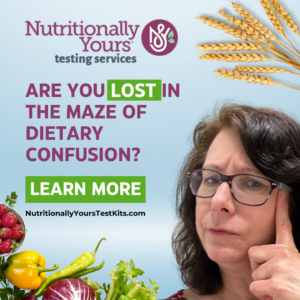Navigating the world of nutrition can be a daunting task. Amid numerous diets and contradictory guidance, confusion is common.
This article aims to clear the fog of metabolic challenges and diet confusion. We’ll delve into the principles of healthy eating and debunk common food myths.
We’ll explore the role of metabolism in your diet. You’ll learn about how we clear up any metabolic confusion diet concerns by personalizing your meal plans.
We’ll also guide you through food facts and managing and testing for food intolerance. This knowledge will empower you to make informed food choices.
Finally, we’ll provide practical tips for a balanced diet. These guidelines will help you navigate the maze of dietary confusion and embark on a journey towards healthier eating.
Stay tuned as we unravel the mystery of healthy eating guidelines.

Healthy eating is more than just a diet. It’s about nourishing your body with a variety of nutrients that are best for you and your health.
These nutrients include proteins, carbohydrates, fats, vitamins, and minerals. They are essential for maintaining good health and preventing diseases.
However, understanding what constitutes a personalized healthy diet can be challenging. This is where dietary clarity comes into play.
Can you imagine how easy it would be if you knew precisely which proteins, carbohydrates and fats were best for you to eat? And which ones you need to avoid?

Healthy eating involves consuming a balanced mix of nutrients. It’s not about strict limitations or depriving yourself of the foods you love.
Rather, it’s about feeling great, having more energy, and improving your health. It’s about striking a balance that works for your lifestyle and dietary preferences.
Healthy eating also means listening to your body’s hunger cues. It’s about eating when you’re hungry and stopping when you’re full.
In addition to understanding food facts and managing food intolerance, it’s essential to consider food reactions when discussing healthy eating. Food reactions can manifest as sensitivities, and can significantly impact your overall well-being. By being mindful of how your body reacts to different foods and making informed dietary choices, you can support your health and well-being through a balanced and personalized approach to eating.
Dietary confusion arises from conflicting dietary advice. It can make it difficult to make informed food choices.
This confusion can lead to unhealthy eating habits. It can also contribute to stress and anxiety around food.
Understanding healthy eating guidelines and which foods are best for your body and health, can help combat dietary confusion. It can empower you to make healthier food choices, simplify grocery shopping and improve your overall well-being.
Metabolism plays a crucial role in your diet. It’s the process by which your body converts what you eat and drink into energy.
During this complex process, calories in food and beverages are combined with oxygen. This releases the energy your body needs to function.
Even when you’re at rest, your body needs energy. This energy is used for functions like breathing, circulating blood, and repairing cells.
Food intolerances can impact your metabolism and hinder health improving or weight loss efforts. When your body has difficulty digesting or absorbing certain foods due to intolerances, it can lead to inflammation and other metabolic disruptions. This can slow down your metabolism, making it challenging to lose weight effectively even with a healthy diet and exercise routine.
The actual metabolic confusion diet is a dietary approach that involves varying your caloric intake. The idea is to keep your metabolism guessing to boost fat burning.
This diet involves alternating between high-calorie and low-calorie days. The goal is to prevent your metabolism from adapting to a certain calorie level.
While some people find this approach helpful, it’s important to note that more research is needed.
We personally feel it is best to understand your metabolism via comprehensive metabolic labs which we have available on our website. We also feel it is vital to test for food intolerance to understand which foods may be slowing down your metabolism.
Food labels are a great source of food facts. They provide information about the nutritional content of a food item.
Understanding food labels can help you choose foods that align with your dietary needs and goals. For instance, if metabolic testing shows you are low in protein, you can increase your protein to a more adequate amount for your body. And if your fat storage markers are high you can reduce the fat grams per meal to improve your health.
However, food labels can be confusing for some people. It’s important to learn how to read them correctly. This includes understanding serving sizes and the difference between “per serving” and “per package” information. Lastly, it is important not to simply focus on the front part of an item, but really look at the fat, protein and carbohydrate grams on the nutrition facts part of the label.
Advertising may lead you to think a food or product is good, when it is really not.
Food intolerance refers to difficulty digesting or absorbing certain foods. Symptoms can include inflammation, weight gain, gas, bloating, stomach pain, constipation, hair loss, skin eruptions, headaches and diarrhea. The symptoms can vary person to person.
If you have a food intolerance, it’s important to identify the offending foods. This can be done through an elimination diet or by comprehensive food intolerance testing.
Once identified, you can manage your food intolerance by avoiding the offending foods. However, it’s important to ensure that you’re still getting all the necessary nutrients. This may require finding suitable substitutes or taking dietary supplements.
In conclusion, healthy eating is about balance, variety, personalization, and making sustainable changes.
Remember, every small step towards healthier eating habits counts. So, start today and embrace a healthier, less confusing approach to eating.
Two tests we suggest based on fixing any metabolic confusion
* Alcat Food Intolerance
* Comprehensive Metabolic Labs

I have been working in the field of holistic health and wellness for over 30 years. Nutritionally Yours has a functional medicine medical doctor on staff. Nutritionally Yours offers a wide variety of at-home blood test kits, nutrition test kits at, home health test kits, nutrition, naturopathic, metabolic and weight loss appointments Monday – Friday 9-4 EST.
Our goal and mission is to help our clients get to the root cause of health or weight loss struggles so you can feel healthier, confident, and accomplish more in life.
BOOK a virtual health and nutrition appointment today, so we can listen to your health concerns and guide you on the right path to feeling fantastic again.
Let’s get you feeling happier, healthier, confident, energized and feeling amazing.